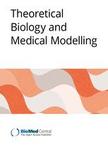版权所有:内蒙古大学图书馆 技术提供:维普资讯• 智图
内蒙古自治区呼和浩特市赛罕区大学西街235号 邮编: 010021

作者机构:Univ Karachi Int Ctr Chem & Biol Sci Dr Panjwani Ctr Mol Med & Drug Res Karachi 75270 Pakistan Quaid I Azam Univ Dept Chem Islamabad 45320 Pakistan
出 版 物:《THEORETICAL BIOLOGY AND MEDICAL MODELLING》 (理论生物学和医学模式)
年 卷 期:2010年第7卷第6期
页 面:22-22页
核心收录:
学科分类:0710[理学-生物学] 07[理学] 070104[理学-应用数学] 0701[理学-数学]
基 金:Higher Education Commission, Pakistan AMBER
主 题:Protein Data Bank Root Mean Square Deviation Catalytic Triad Docking Protocol Protein Data Bank File
摘 要:Background: Alzheimer s disease, known to be associated with the gradual loss of memory, is characterized by low concentration of acetylcholine in the hippocampus and cortex part of the brain. Inhibition of acetylcholinesterase has successfully been used as a drug target to treat Alzheimer s disease but drug resistance shown by butyrylcholinesterase remains a matter of concern in treating Alzheimer s disease. Apart from the many other reasons for Alzheimer s disease, its association with the genesis of fibrils by beta-amyloid plaques is closely related to the increased activity of butyrylcholinesterase. Although few data are available on the inhibition of butyrylcholinesterase, studies have shown that that butyrylcholinesterase is a genetically validated drug target and its selective inhibition reduces the formation of beta-amyloid plaques. Rationale: We previously reported the inhibition of cholinesterases by 2,3-dihydro-1, 5-benzothiazepines, and considered this class of compounds as promising inhibitors for the cure of Alzheimer s disease. One compound from the same series, when substituted with a hydroxy group at C-3 in ring A and 2-thienyl moiety as ring B, showed greater activity against butyrylcholinesterase than to acetylcholinesterase. To provide insight into the binding mode of this compound (Compound A), molecular docking in combination with molecular dynamics simulation of 5000 ps in an explicit solvent system was carried out for both cholinesterases. Conclusion: Molecular docking studies revealed that the potential of Compound A to inhibit cholinesterases was attributable to the cumulative effects of strong hydrogen bonds, cationic-pi, pi-pi interactions and hydrophobic interactions. A comparison of the docking results of Compound A against both cholinesterases showed that amino acid residues in different sub-sites were engaged to stabilize the docked complex. The relatively high affinity of Compound A for butyrylcholinesterase was due to the additional